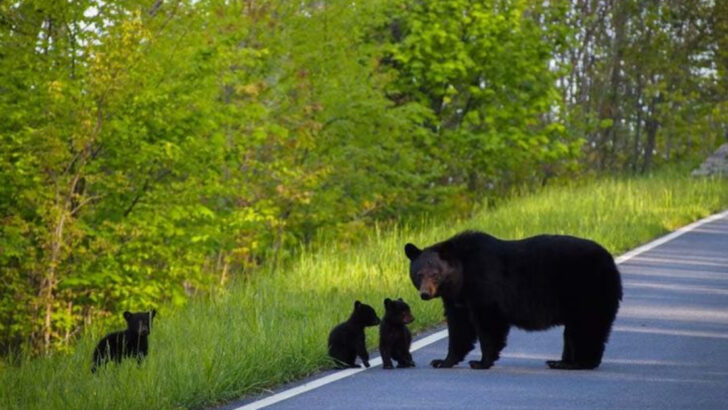Step into the wild, and you might just lock eyes with a bear.
Not in a zoo. Not on a screen. In real life—where the air smells like pine, the rivers rush cold, and the silence breaks with the snap of a twig.
Across the U.S., some national parks are practically bear magnets. These aren’t shy creatures hiding deep in the woods. In the right places, at the right times, they stroll across trails, fish in broad daylight, and raid unattended picnic baskets like they own the place.
From black bears munching berries in the Smokies to grizzlies roaming the backcountry of Glacier, these parks offer front-row seats to raw, breathtaking power.
So grab your binoculars—and maybe a bear bell. These are the 16 parks where you’re most likely to see bears doing what bears do best: being unapologetically wild.
Yellowstone National Park
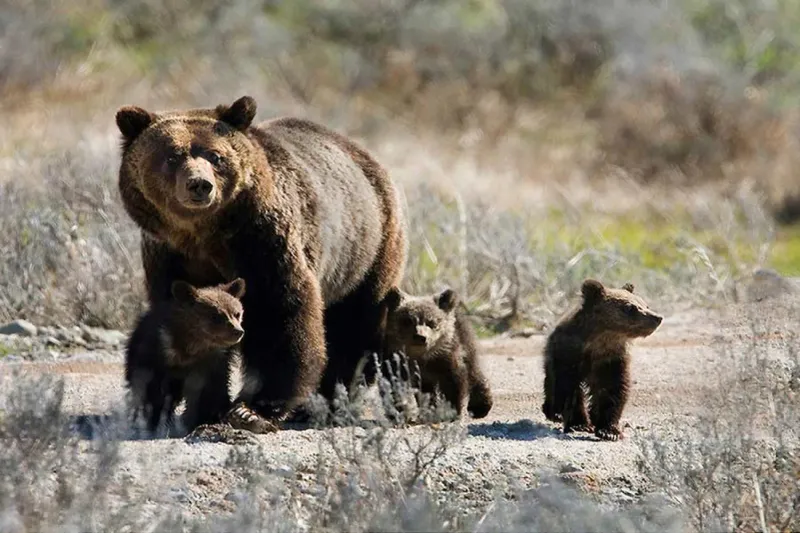
Yellowstone National Park, a wildlife enthusiast’s paradise, is renowned for its large population of grizzly bears. Each spring, as the snow melts and new life emerges, these powerful creatures can often be seen foraging in the expansive meadows. The park’s diverse ecosystem, ranging from dense forests to open plains, provides the perfect habitat for bears.
Visitors might encounter bears along the park’s numerous trails or even while driving through its scenic routes. However, safety precautions are essential when observing these animals up close. With patience and respect, a bear sighting here becomes a memorable highlight.
Great Smoky Mountains National Park

In the misty hills of Great Smoky Mountains National Park, black bears can be found thriving in their natural habitat. Known for their playful demeanor, these bears often delight visitors with their antics, especially the younger cubs.
Early mornings and late evenings provide the best opportunities to spot them as they explore the park’s dense woodlands. The park’s commitment to preserving its rich biodiversity allows black bears to roam freely, often crossing paths with hikers on the well-trodden trails. Observing these bears provides a glimpse into the dynamic ecosystems of the Smokies.
Katmai National Park & Preserve

Katmai National Park & Preserve offers one of the most spectacular bear-watching experiences in the world. Here, brown bears are often seen fishing for salmon at the iconic Brooks Falls, a sight that attracts nature photographers and enthusiasts alike.
The park’s remote location in Alaska ensures a pristine environment, where bears can be observed engaging in their natural behaviors without human interference. Visitors are often amazed by the sheer size and strength of these creatures as they navigate the rushing waters. Katmai remains a testament to the raw beauty of nature.
Denali National Park & Preserve
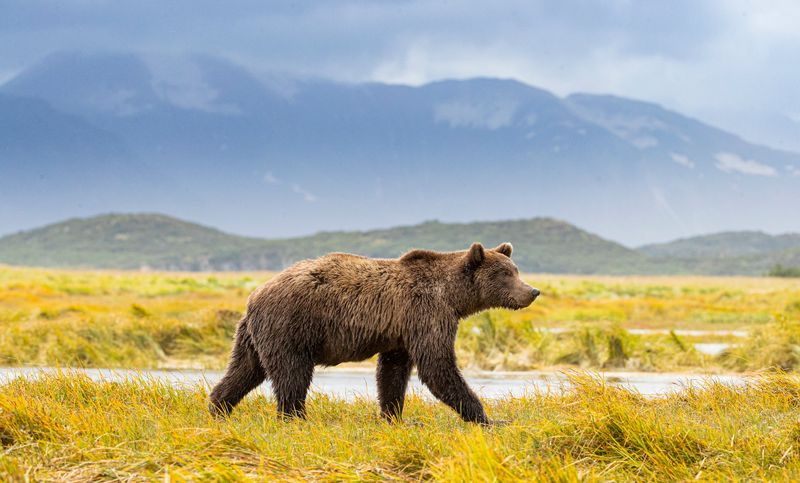
Denali National Park & Preserve boasts vast, untouched wilderness where grizzly bears roam freely. The park’s expansive tundra and subalpine ecosystems offer vital habitats for these magnificent creatures.
Travelers to Denali are often rewarded with sightings of bears, especially during the summer months when they are most active. The breathtaking backdrop of Mount Denali adds a majestic touch to any bear encounter, making every glimpse a photographic opportunity. Respectful observation is key, as these bears are an integral part of the park’s natural balance.
Glacier National Park
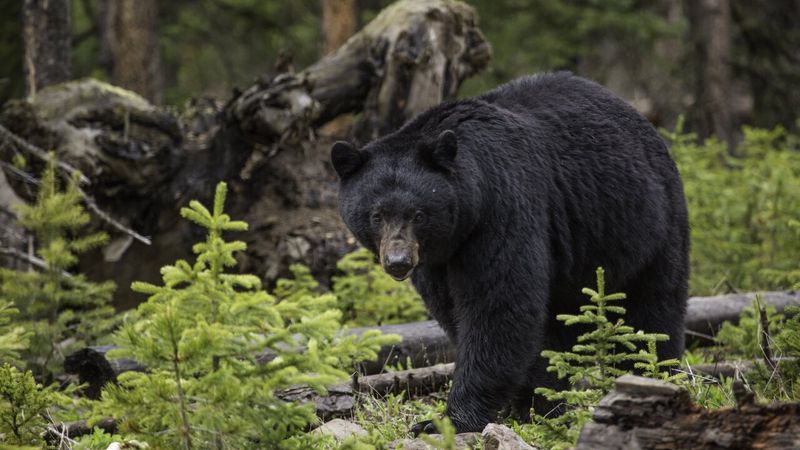
Glacier National Park, with its rugged terrain and pristine landscapes, is home to both black and grizzly bears. The park’s extensive network of trails provides numerous opportunities for bear watching.
Spring and early summer are prime times to observe these bears as they emerge from hibernation, hungry and active. Visitors are often captivated by the bears’ agility as they traverse the park’s steep slopes and rocky terrain. While encounters can be thrilling, it is essential to maintain a safe distance to ensure both human and bear safety.
Yosemite National Park
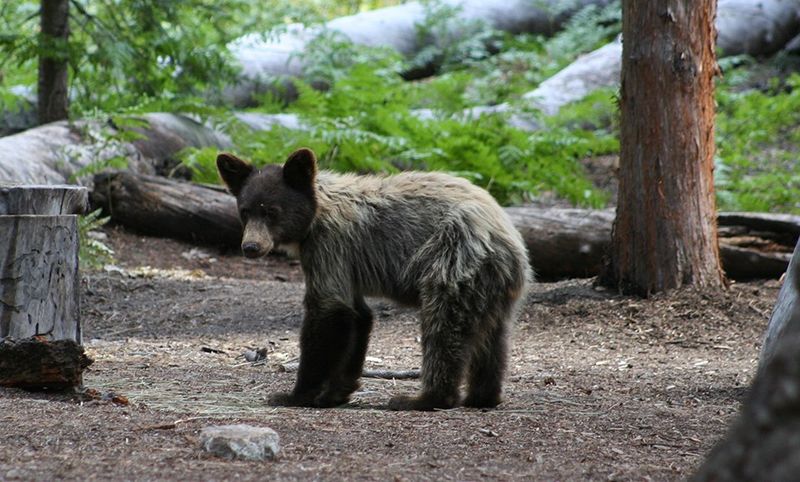
Yosemite National Park, famed for its towering cliffs and majestic waterfalls, is also a habitat for black bears. These bears, often seen wandering through the park’s forests and meadows, are a cherished sight for visitors.
Encountering a black bear amidst Yosemite’s breathtaking scenery is an experience to remember. The park’s commitment to wildlife conservation ensures that bear populations remain stable, allowing visitors to appreciate these creatures in their natural surroundings. Photographers and wildlife enthusiasts alike find joy in capturing the bears’ interactions with their environment.
Grand Teton National Park

Grand Teton National Park, with its dramatic landscapes and diverse wildlife, is an excellent place to see grizzly bears. The park’s open meadows and rivers offer ideal conditions for bear sightings, particularly in the spring and fall.
Visitors may spot bears foraging for berries or fishing in the crystal-clear waters. The stunning mountain backdrops enhance every sighting, providing a perfect setting for wildlife photography. While exploring the park, it’s crucial to respect wildlife guidelines to ensure safety and preserve the natural harmony of the area.
Sequoia National Park
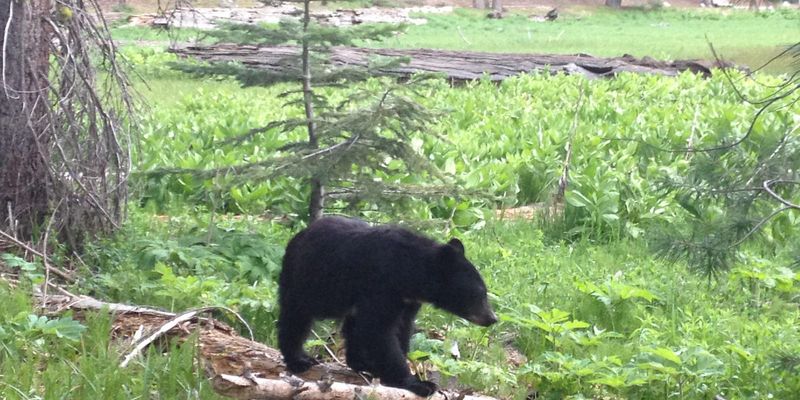
Sequoia National Park, renowned for its giant trees, is also home to a vibrant population of black bears. These agile creatures can often be seen climbing the massive sequoias or foraging on the forest floor.
The park’s lush woodlands provide ample food sources and shelter, making it an ideal bear habitat. Observing bears in this ancient forest setting offers a unique connection to nature, where visitors can appreciate the delicate balance of the ecosystem. As always, maintaining a respectful distance ensures a safe and unforgettable experience.
Olympic National Park
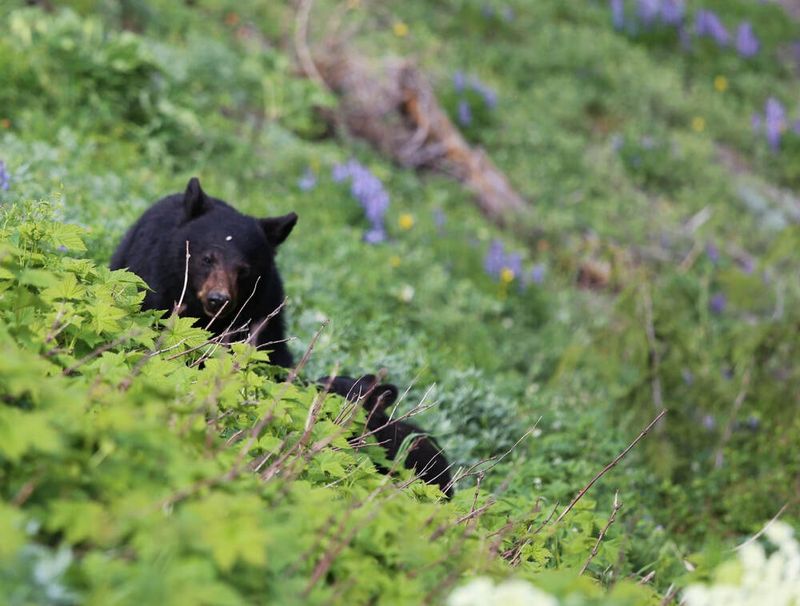
Olympic National Park, with its diverse ecosystems ranging from rugged coastlines to temperate rainforests, is a haven for black bears. These adaptable creatures can be found throughout the park, often foraging for food in the dense undergrowth.
Visitors trekking through the park’s lush trails may encounter bears searching for berries or fishing in the clear streams. The serene beauty of the surrounding landscape enhances the thrill of a bear sighting, creating a memorable wildlife experience. Responsible observation practices help protect these animals and preserve the park’s natural heritage.
North Cascades National Park
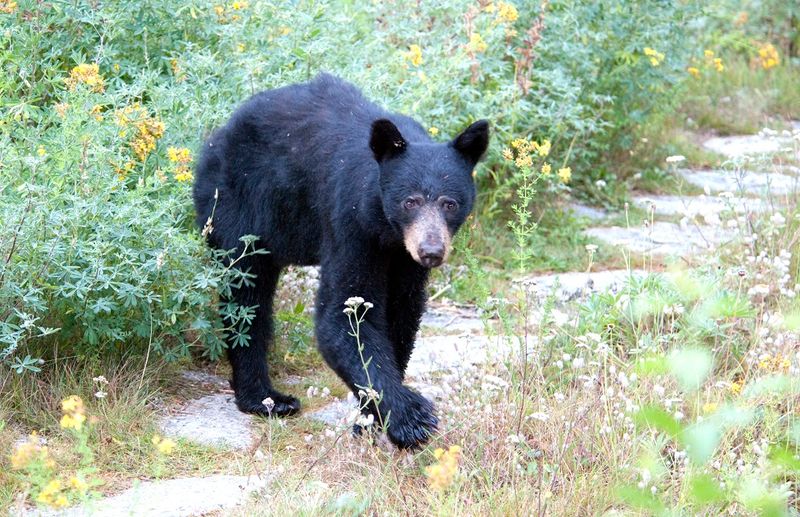
North Cascades National Park, often referred to as the “American Alps,” is home to a thriving population of black bears. The park’s rugged terrain and dense forests provide an ideal environment for these animals.
Bears are frequently spotted by adventurous hikers exploring the remote trails of the park. The dramatic mountain scenery adds a sense of awe to every encounter, offering a chance to see bears in one of the most spectacular settings in the country. As always, maintaining a respectful distance is key to a safe and enjoyable wildlife experience.
Shenandoah National Park
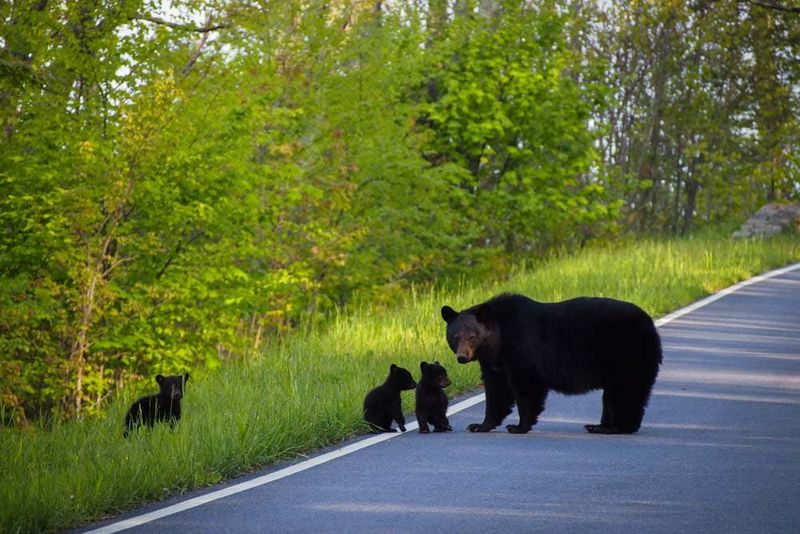
Shenandoah National Park, with its rolling hills and scenic vistas, is a popular destination for spotting black bears. These bears are often seen foraging in the park’s lush meadows and forests.
Visitors driving along the Skyline Drive or hiking the numerous trails may encounter bears going about their daily routines. The tranquil beauty of Shenandoah provides a perfect backdrop for observing these creatures in their natural environment. Following park guidelines ensures a safe and respectful interaction with the wildlife, preserving the park’s peaceful harmony.
Rocky Mountain National Park
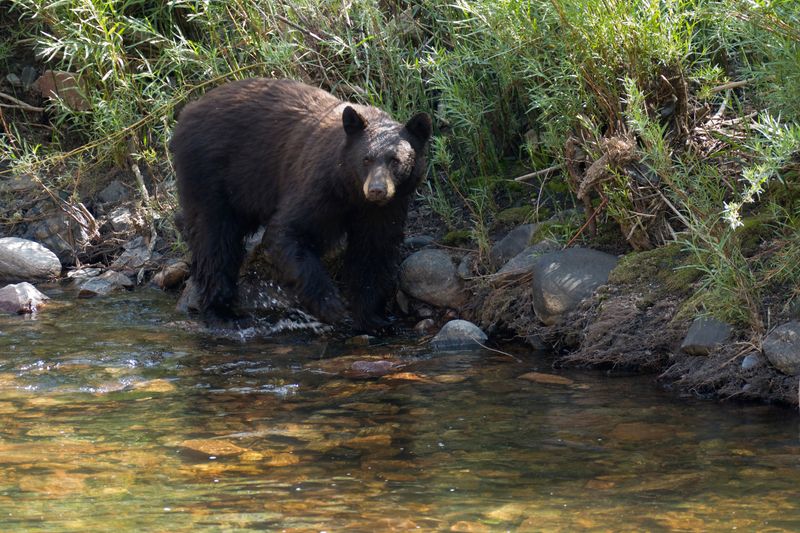
Rocky Mountain National Park offers a stunning landscape where black bears roam freely. The park’s diverse habitats, from lowland forests to alpine meadows, support a variety of wildlife, including bears.
Visitors often see bears during the summer months when they are most active. The breathtaking mountain views provide a picturesque setting for wildlife watching, making every encounter a memorable event. Ensuring safety and respecting the bears’ space is crucial to maintaining the park’s natural balance and allowing these animals to thrive undisturbed.
Kings Canyon National Park
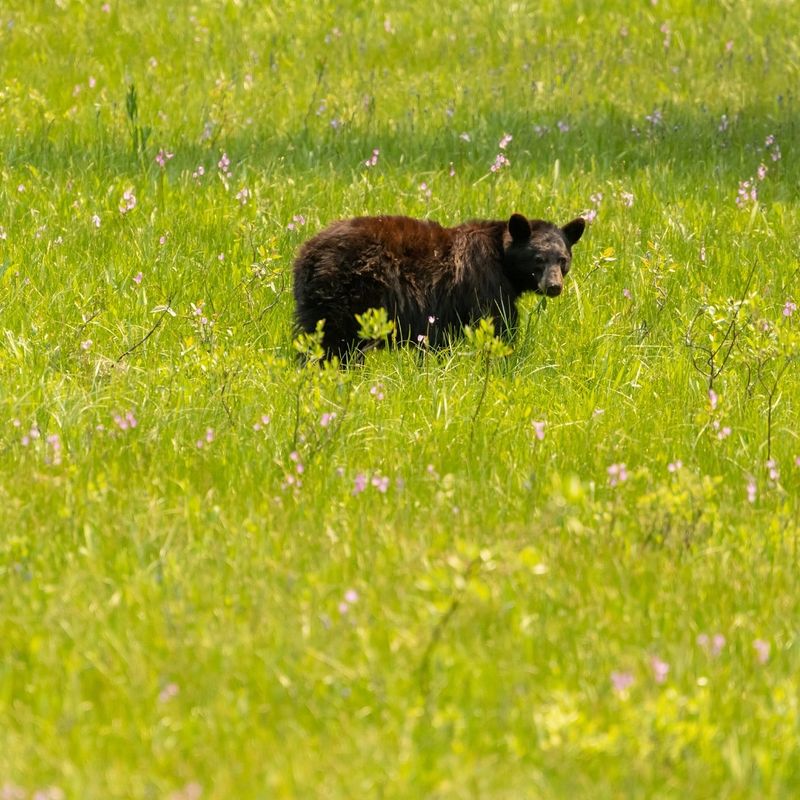
Kings Canyon National Park, adjacent to Sequoia, offers another excellent opportunity for bear sightings. The park’s rugged canyons and lush valleys provide a rich habitat for black bears.
These bears are often observed exploring the park’s diverse landscapes, from riverbanks to towering cliff sides. The serene environment enhances the excitement of a bear encounter, offering a chance to connect with nature’s wonders. Visitors are encouraged to follow safety guidelines and respect the wildlife, ensuring a harmonious coexistence in this natural paradise.
Wrangell-St. Elias National Park & Preserve
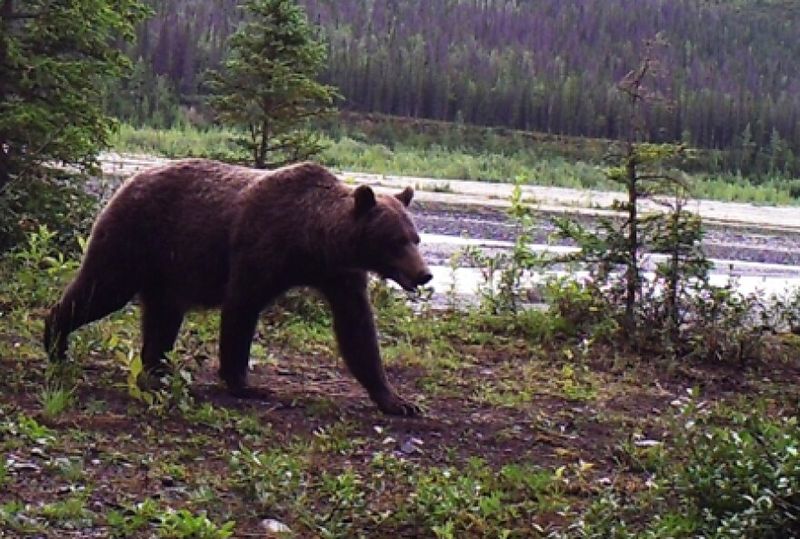
Wrangell-St. Elias National Park & Preserve, the largest in the United States, is a remote wilderness teeming with wildlife, including brown bears. The park’s vast landscapes, from glaciers to forests, provide an ideal habitat for these majestic creatures.
Visitors venturing into this untouched wilderness may be rewarded with sightings of bears fishing or exploring the rugged terrain. This pristine environment offers a unique opportunity to witness bears in their natural setting, far away from human interference. Respectful observation ensures a safe and enriching experience for all.
Cades Cove (part of Great Smoky Mountains National Park)
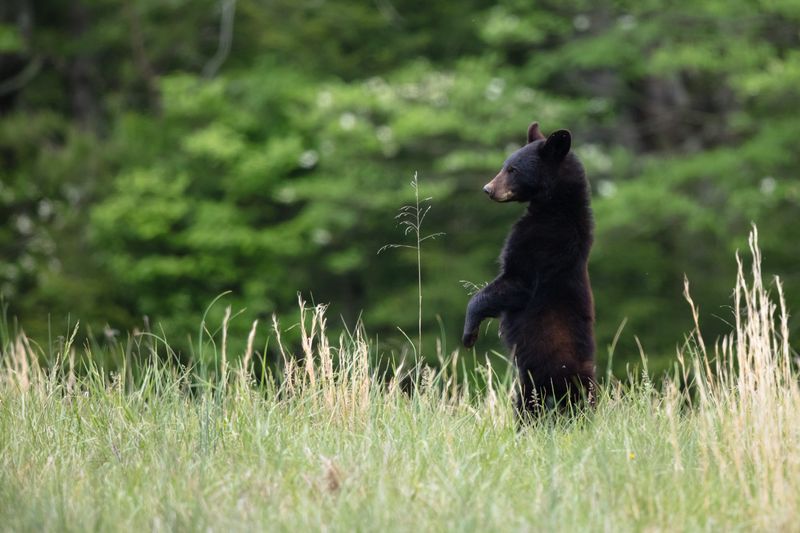
Cades Cove, a picturesque valley within Great Smoky Mountains National Park, is renowned for its black bear population. This idyllic setting, with its rolling fields and surrounding mountains, offers a perfect backdrop for bear watching.
Visitors often spot bears during early morning or late afternoon drives along the scenic loop road. The historic cabins and lush landscapes add a sense of timeless beauty to every encounter. Maintaining a safe distance and respecting the wildlife ensures that these experiences remain both safe and unforgettable for all who visit.
Kenai Fjords National Park
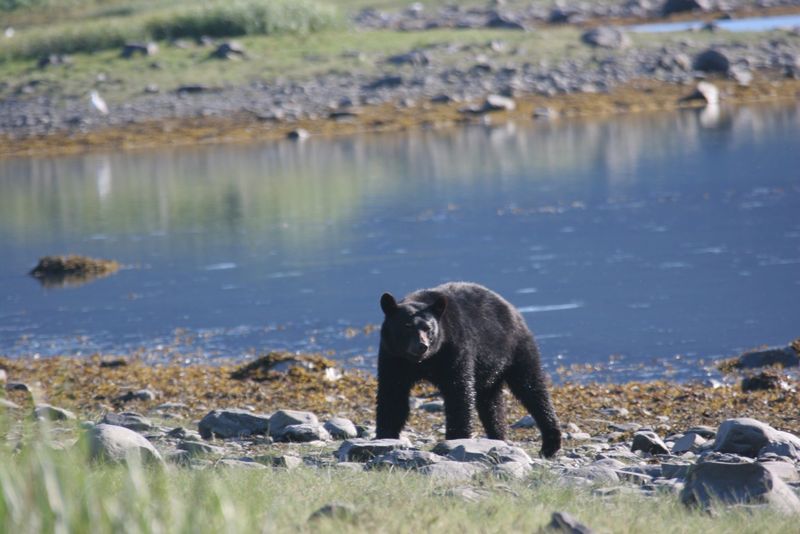
Kenai Fjords National Park, located in Alaska, offers a unique glimpse into the life of bears amidst its icy fjords and dense forests. Imagine a bear, poised on the edge of a turquoise river, waiting patiently to catch its next meal. The park’s cold, pristine environment is home to a variety of wildlife, but it’s the bears that captivate visitors with their powerful presence.
Despite the chill, these bears thrive in this harsh yet stunning landscape. Their resilience in such a challenging habitat is awe-inspiring, making Kenai Fjords a must-visit for bear enthusiasts and nature lovers alike.

